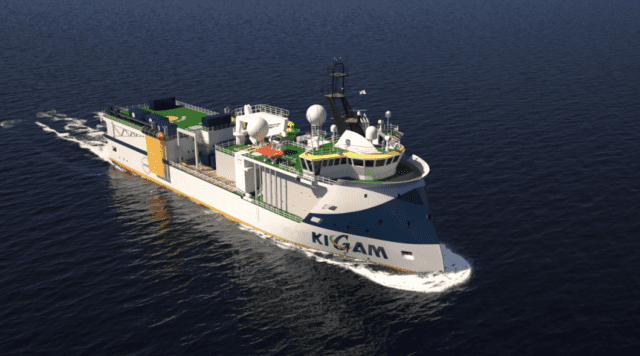
The construction of a 6,000 ton
The Ministry of Trade, Industry and Energy announced that it will sign a ‘3D·4D physical exploration research vessel construction business contract’ at the Korea Institute of Geoscience and Mineral Resources on the afternoon of the 28th with the Korea Institute of Geoscience and Mineral Resources, which is the supervising agency for the construction of the physical exploration research vessel, and Hanjin Heavy Industries, the builder.
The physical exploration research vessel’Tamhae 3 (tentative name)’ is officially in service in 2024 after it has been designed, built, and commissioned for about three years at the Yeongdo Shipyard of Hanjin Heavy Industries, which is a builder.
In the meantime, underwater resource exploration has been conducted through Tamhae 2 (built in 1996, 2,85 ton class), the only physical exploration research vessel in Korea, but the ship and research equipment have been aging, and a new physical exploration research vessel has been built.
Previously, Tamhae 2 was equipped with a small-scale 3D streamer equipment that acquires 3D geological images and made a great contribution to the exploration of domestic seabed resources, such as discovering gas hydrates in the East Sea.

The scale of the new physical exploration research vessel to be built this time will be expanded from 2,000 tons to 6,000 tons. In addition, by applying the ice-resistant class to ships, the scope of exploration is expanded to the polar and ocean areas, such as international joint exploration of Arctic resources on the continental shelf.
It is also equipped with 8 sets of seismic wave receiving streamers with a length of 6 km (km) that can scan an area three times as large as Tamhae 2 deeper and more precisely. Through 4D monitoring equipment that detects and predicts changes in submarine strata over time, the efficiency and precision of submarine resource exploration is expected to increase significantly.
Related Articles

Dongbu Construction Consortium to the preferred negotiator for the sale of Hanjin Heavy Industries & Construction

KDB Investment aims at Hanjin Heavy Industries… Presence in the M&A market↑

Acquisition of Hanjin Heavy Industries, Dongbu Construction, SM Merchant Marine, and Keithon 3rd wave battle

Petroleum Corporation secures concession area for deep sea exploration project in East Sea
The advanced equipment installed on the new physical exploration research vessel is used not only in submarine resource exploration, but also in various fields such as investigation and preparation for submarine earthquakes through investigation and analysis of submarine faults, determining the location of hazardous facilities such as nuclear power plants, and monitoring carbon dioxide (CO2) undersea storage. Will be.
Ministry of Industry’s Resource Industry Policy Officer Moon Dong-min said, “When the construction of this state-of-the-art physical exploration research vessel is completed, it will be an opportunity to raise the level of technology for submarine resource exploration in Korea by expanding the scope of development of submarine resources to the continental shelf and polar regions.”
